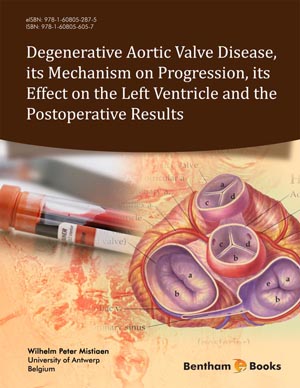Abstract
For patients deemed unfit to undergo AVR, BAV has been tried as a less traumatic alternative. Recurrence of stenosis within months has been observed, however. BAV has been abandoned, and alternatives have been explored.
Implantation of a valve through a catheter has proven experimentally feasible and has been performed for the first time in a patient in 2003. The more cumbersome transseptal technique has been replaced by the trans-arterial technique. This procedure has not always been applicable in patients with atheromatosis of the femoral and iliac arteries or of the aorta. As alternative, a trans-apical approach has been developed. TAVI might also become attractive as “valve-in-valve” procedure, for patients with a degenerated BHV.
The current procedure needs an elaborate imaging system, with a pre-procedural study of the anatomy of the aortic root. Interference with anatomical structures such as the coronary arteries and the conduction system needs to be avoided. Attachment and anchoring systems needs to be adequate, to avoid secondary displacement.
The selection of patients is problematic: the EuroSCORE tends to overestimate operative mortality of conventional AVR, especially in high risk patients. Such patients might be denied this operation unjustly. A RCT, comparing TAVI with medical treatment and with conventional AVR might seem desirable.
The early clinical and hemodynamic results in terms of TVG and AVA seem acceptable but PPVL could be a problem. A recently published RCT, which compared medical treatment or BAV with TAVI, showed superior clinical and hemodynamic results for the latter. PPVL has been considered as acceptable and has not worsened after one year. Vascular complications, bleeding an stroke have been troubling. Technical improvements with smaller delivery systems might offer relief. A second RCT has shown the non inferiority of TAVI, compared to conventional AVR, at least for the first postoperative year. TAVI offers the advantage of being less traumatic, compared to open surgery.
These results make clear that TAVI is here to stay.
Keywords:
Balloon aortic valvotomy, bleeding, conventional aortic valve replacement, EuroSCORE, exclusion criteria, imaging, life expectancy, paravalvular leak, percutaneous devices, quality of life, randomized controlled trial, stroke, transapical, transarterial, vascular complications.


 Download PDF Flyer
Download PDF Flyer